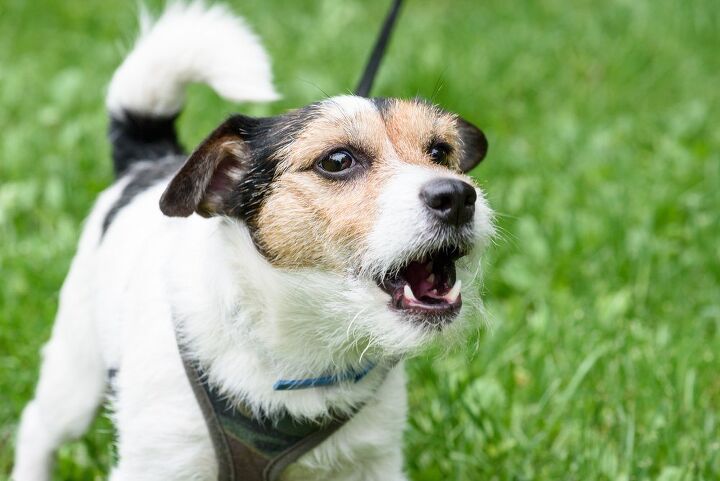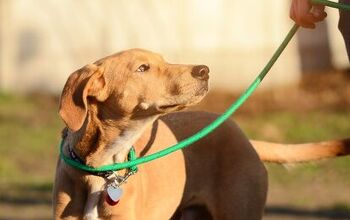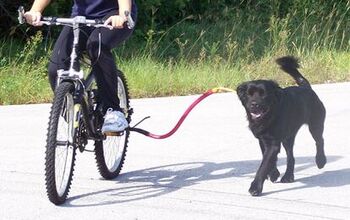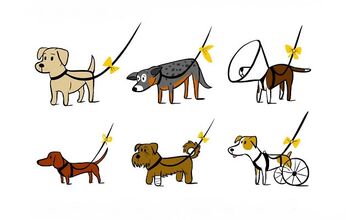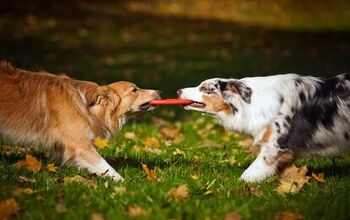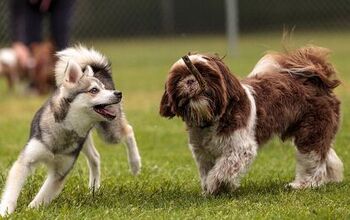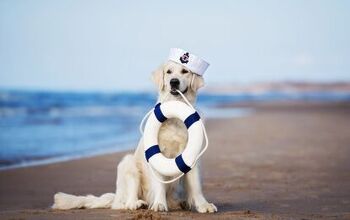How to Manage Leash Reactivity in Your Dog

You may never have heard the term, but at some point, you’ve almost certainly seen it in play when out walking your pooch. Another dog approaches and immediately starts to growl, lunge and pull on his leash as you near. He appears ready to tear your pet to shreds if he can get his paws on him. You may even have experienced it with your own dog and wondered what the heck set him off. The truth is that being leashed is what set him off because it made him feel vulnerable and in need of posturing to frighten off other animals, people or even inanimate objects.
Not to be confused with the behavior of an aggressive dog, leash reactive dogs are not looking for a fight, they’re looking to avoid one and they only way they can do that is to try to scare away the threat. The very same dog in a leash-free park could easily be the ideal playmate for other animals.
Related: Best Leather Dog Leashes
But, once he kicks off, no amount of scolding, leash tugs, or even a shock collar will help get the situation back under control. In fact, taking any of these actions on a frightened dog will only exacerbate an already stressful situation for him. The trick to helping him move past this frustrating and often embarrassing behavior is to understand what triggers his fight or flight reaction.
This can start by taking note of what causes him to suddenly become agitated while you’re out walking. Is it children? Bicycles? Other dogs? Men? A sound or situation? What’s taking place the moment he first becomes stressed and pulls on his lead? Those will be the triggers you need to work on.
Once identified, you can begin to de-sensitize your dog in the same way you would help him overcome his fear of loud noises such as thunderstorms or fireworks. It’s accomplished through gradual, controlled exposure to the stimuli until its no longer perceived as a threat.
This can be done in increments and begin as simply as sitting with him on the front porch or back deck each day while taking in the sights and sounds of daily life. Cars go by, kids ride on bikes, other dogs are being walked, sirens are set off and car horns beep. The goal is to slowly introduce him to multiple, different, real-life scenarios.
Of course, you’ll also be out walking him and for the first while, you should avoid known catalysts. If children set him off, don’t walk near schools or playgrounds during this de-sensitization process. As you gradually add this type of exposure into your daily route, consider a counter-conditioning approach. When you know he’ll be exposed to a trigger, give him a little treat. Over time, he’ll be conditioned to associate the trigger with something good.
But, key to any leash reactivity training is working with a dog that is fully aware of, and obedient to, the basic commands of sit, stay, come, and leave it. This is how you will get his attention, and set expectations that he understands and responds to.

Sharing space with three seriously judgy Schnoodles and a feline who prefers to be left alone. #LivingMyBestLife
More by Mary Simpson



